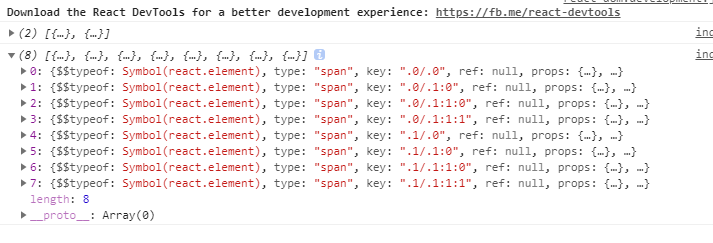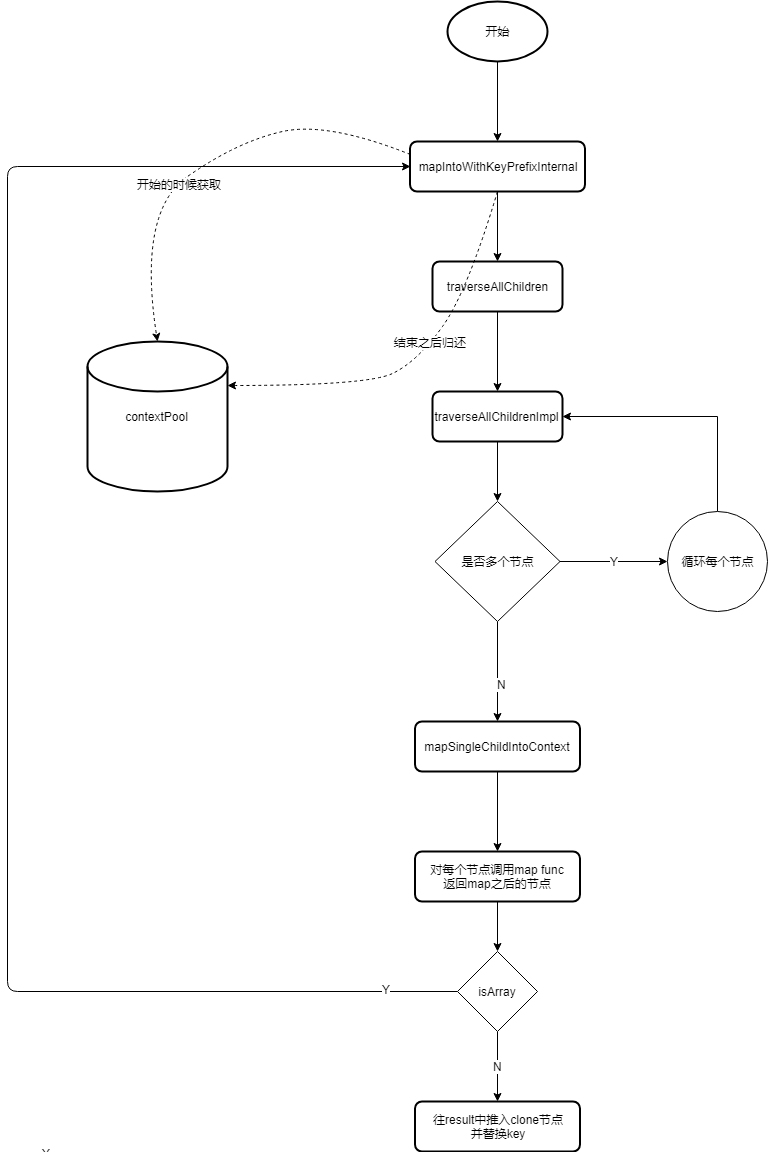1.10 Hooks
参考文章:https://juejin.im/post/5be3ea136fb9a049f9121014
demo:
/** * 必须要react和react-dom 16.7以上 */ import React, { useState, useEffect } from 'react' export default () => { const [name, setName] = useState('jokcy') useEffect(() => { console.log('component update') return () => { console.log('unbind') } }, []) return ( <> <p>My Name is: {name}</p> <input type="text" value={name} onChange={e => setName(e.target.value)} /> </> ) }
1.11 React.children
用法文章推荐:https://www.jianshu.com/p/d1975493b5ea
源码: https://github.com/KieSun/Dream/issues/18
https://juejin.im/post/5cd557bbf265da03a97b0780
demo:
import React from 'react' function ChildrenDemo(props) { console.log(props.children) console.log(React.Children.map(props.children, c => [c, [c, [c, c]]])) return props.children } export default () => ( <ChildrenDemo> <span>1</span> <span>2</span> </ChildrenDemo> )

如果map的第二个参数返回的是一个数组,不管是多少层的,都会展开成一层的一个一维数组。
源码流程图:

首先在mapInfoWithKeyPrefixInternal中去对象重用池中取一个context,用完了会还回来的,然后到了traverseAllChildrenImpl去查看Children是不是一个数组或者一个可以遍历的对象,判断是不是多个节点,如果是单个节点,就到了mapSingleChild(不是的话就递归),这里调用调用我们自己传入的callBack函数。我们自己的callBack函数可能返回一个数组,或者是一个新的节点,这样我们就拿到一个map之后的节点,如果又是一个数组,又回到mapIntoWithKeyPrefixInternal.这样递归的话,就解释了上面的那个结果。
为什么要用重用池尼?因为在判断我们的callBack函数是不是返回数组的时候,如果是就递归调用mapIntoWithKeyPrefixInternal,这里面又得用到重用池,因此如果是返回两层数组,就得用到两个context,所以需要重用池。
1.12、React.memo&&React.Fragment&&React.cloneElement&&React.createFactory
React.memo用法参考:https://www.jianshu.com/p/b3d07860b778
React.Fragment用法参考:https://www.reactjscn.com/docs/fragments.html
React.createElement用法参考:https://www.jianshu.com/p/2ccf0cd14388